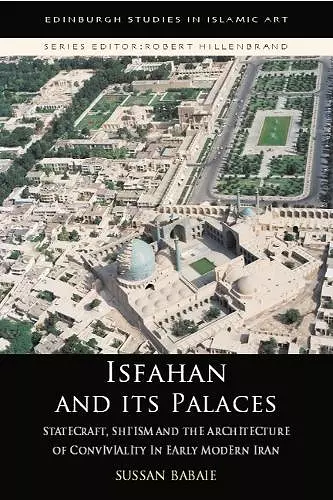Isfahan and its Palaces
Statecraft, Shi`Ism and the Architecture of Conviviality in Early Modern Iran
Format:Paperback
Publisher:Edinburgh University Press
Published:30th Apr '18
Should be back in stock very soon

This beautifully illustrated history of Safavid Isfahan (15011722) explores the architectural and urban forms and networks of socio-cultural action that reflected a distinctly early-modern and Perso-Shi'i practice of kingship.
An immense building campaign, initiated in 1590-91, transformed Isfahan from a provincial, medieval, and largely Sunni city into an urban-centered representation of the first Imami Shi'i empire in the history of Islam. The historical process of Shi'ification of Safavid Iran and the deployment of the arts in situating the shifts in the politico-religious agenda of the imperial household informs Sussan Babaie's study of palatial architecture and urban environments of Isfahan and the earlier capitals of Tabriz and Qazvin.
Babaie argues that since the Safavid claim presumed the inheritance both of the charisma of the Shi'i Imams and of the aura of royal splendor integral to ancient Persian notions of kingship, a ceremonial regime was gradually devised in which access and proximity to the shah assumed the contours of an institutionalized form of feasting. Talar-palaces, a new typology in Islamic palatial designs, and the urban-spatial articulation of access and proximity are the architectural anchors of this argument. Cast in the comparative light of urban spaces and palace complexes elsewhere and earlier-in the Timurid, Ottoman, and Mughal realms as well as in the early modern European capitals-Safavid Isfahan emerges as the epitome of a new architectural-urban paradigm in the early modern age.
ISBN: 9781474437196
Dimensions: unknown
Weight: unknown
320 pages